When was influenza vaccine discovered. History of Influenza Vaccination: From Discovery to Modern Vaccines
When was the influenza vaccine discovered. How did early vaccine efforts target the wrong pathogen. What key breakthroughs led to effective flu vaccines. How have influenza vaccines evolved over time.
The Misunderstood Origins of Influenza
For many years, scientists mistakenly believed influenza was caused by bacteria rather than a virus. In 1892, German scientist Richard Pfeiffer isolated a bacterium from flu patients’ noses, naming it ‘bacillus influenzae’. This misconception hampered early vaccine development efforts, particularly during the devastating 1918 influenza pandemic.
It wasn’t until the 1930s that researchers finally identified influenza as a viral illness, paving the way for more effective vaccine research. This marked a crucial turning point in our understanding of the disease and ability to combat it.
What is influenza and how does it spread?
Influenza, commonly known as “the flu,” is a highly contagious respiratory illness caused by influenza viruses. It spreads easily through:
- Airborne droplets when infected people cough, sneeze or talk
- Close contact with infected individuals
- Touching contaminated surfaces
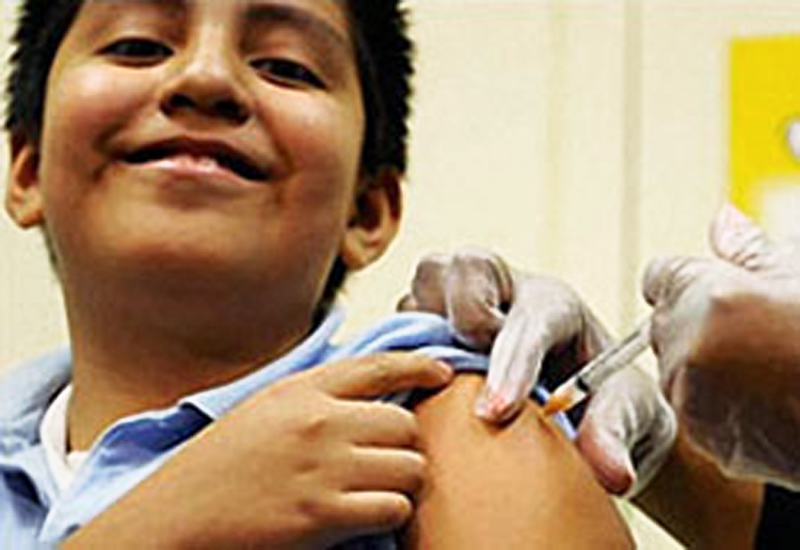
While many cases are mild, influenza can lead to serious complications, especially in vulnerable populations like young children, older adults, pregnant women, and those with certain medical conditions. The most common severe complication is pneumonia, often resulting from a secondary bacterial infection.
The 1918 Influenza Pandemic: A Turning Point
The 1918-1919 H1N1 influenza pandemic, often called “the mother of all pandemics,” highlighted the urgent need for an effective flu vaccine. This global outbreak involved a particularly virulent new strain of the influenza A virus, occurring in multiple waves:
- Early 1918: A relatively mild first wave of infections
- Later 1918: A second, far deadlier wave
The pandemic’s impact was staggering:
- An estimated 500 million people infected worldwide
- Between 20 and 50 million deaths
- Global life expectancy rates dropped by several years
- More deaths than the entire First World War
During this crisis, researchers in the United States and Europe raced to develop a vaccine, producing hundreds of thousands of doses. However, these early efforts were ultimately ineffective because they targeted bacteria rather than the true viral cause of influenza.

Breakthrough: Identifying the Influenza Virus
The pivotal moment in influenza vaccine development came in 1933 when British scientists successfully isolated the influenza virus for the first time. This discovery opened the door to creating truly effective vaccines against the disease.
How did researchers isolate the influenza virus? The breakthrough came when scientists inoculated ferrets with filtered nasal washings from influenza patients. The ferrets developed flu-like symptoms, proving that a virus—not bacteria—was responsible for the illness.
Early Influenza Vaccine Development
Following the isolation of the influenza virus, vaccine research progressed rapidly. Key milestones included:
- 1936: The first experimental flu vaccine using live attenuated viruses
- 1942: Large-scale production of flu vaccines for the U.S. military
- 1945: The first licensed flu vaccine for civilian use in the United States
These early vaccines primarily targeted influenza A strains, as influenza B wasn’t identified until 1940. They were typically monovalent, meaning they protected against a single strain of the virus.

How effective were the first influenza vaccines?
While a significant improvement over previous efforts, early flu vaccines had limitations:
- Variable effectiveness due to rapid viral mutations
- Limited coverage against multiple strains
- Potential for side effects from the use of whole virus particles
Despite these challenges, these vaccines represented a major advancement in public health, offering the first real protection against influenza epidemics.
Evolution of Influenza Vaccines
Over the decades, influenza vaccines have undergone significant improvements to enhance their safety, effectiveness, and manufacturing processes:
Multivalent Vaccines
To address the challenge of multiple circulating flu strains, researchers developed vaccines that could target several variants simultaneously:
- 1960s: Introduction of bivalent vaccines (two strains)
- 1978: First trivalent vaccine (three strains) approved
- 2012: Quadrivalent vaccines (four strains) become available
Improved Production Methods
Vaccine manufacturing techniques have evolved to increase safety and efficiency:
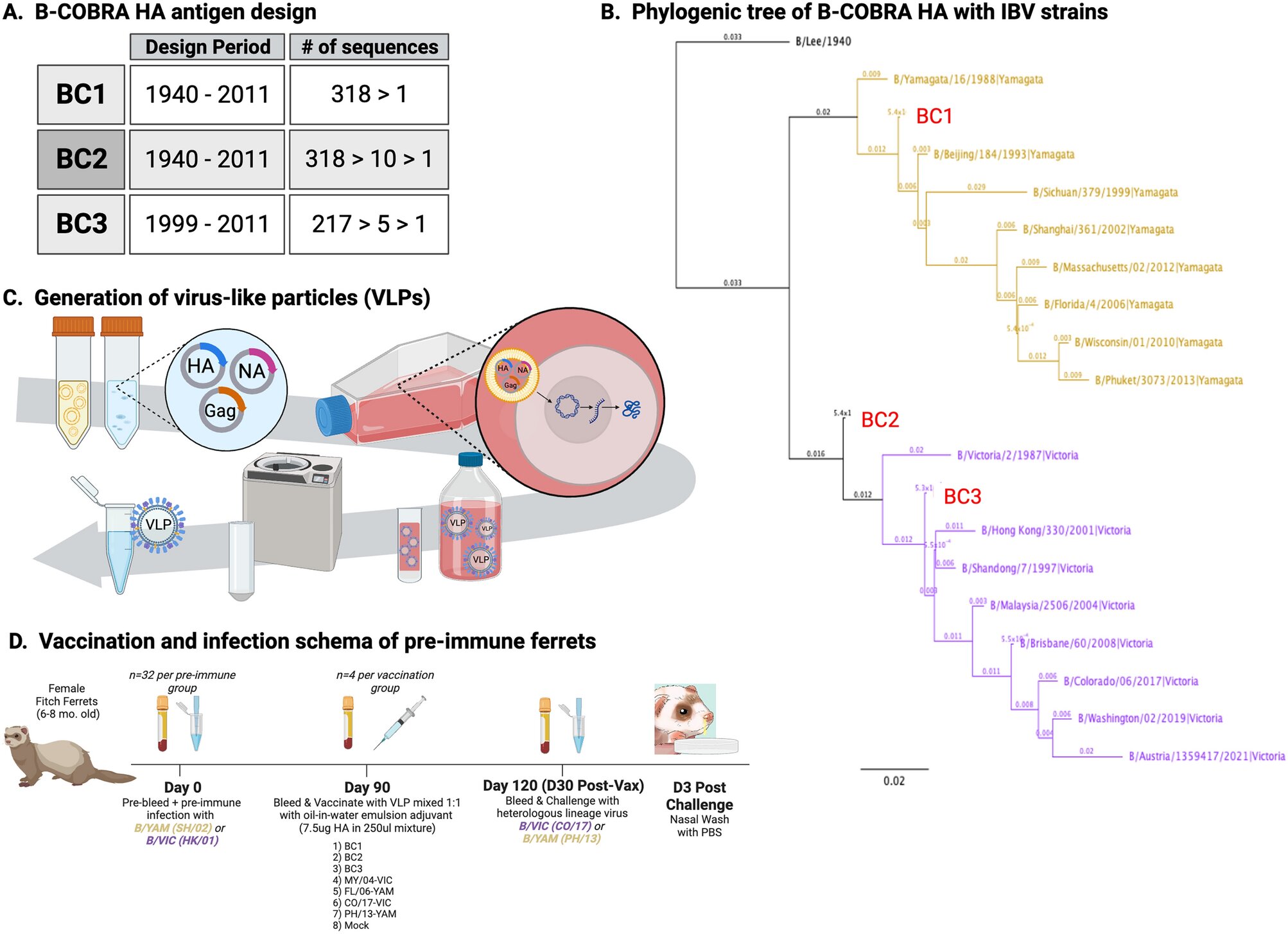
- 1970s: Transition from whole virus to split virus vaccines
- 1980s: Development of subunit vaccines using only specific viral proteins
- 2000s: Introduction of cell-based and recombinant DNA technologies
These advancements have allowed for faster production times and reduced reliance on egg-based manufacturing, which can be vulnerable to supply disruptions.
Modern Influenza Vaccine Strategies
Today, researchers continue to innovate in the field of influenza vaccination, pursuing several promising avenues:
Universal Flu Vaccines
Scientists are working to develop a “universal” flu vaccine that could provide broad protection against multiple strains, potentially eliminating the need for annual vaccinations. These vaccines target conserved parts of the virus that don’t change as rapidly as other regions.
mRNA Technology
The success of mRNA vaccines for COVID-19 has sparked interest in applying this technology to influenza. mRNA flu vaccines could offer several advantages:
- Faster production times
- Easier adaptation to new strains
- Potentially stronger immune responses
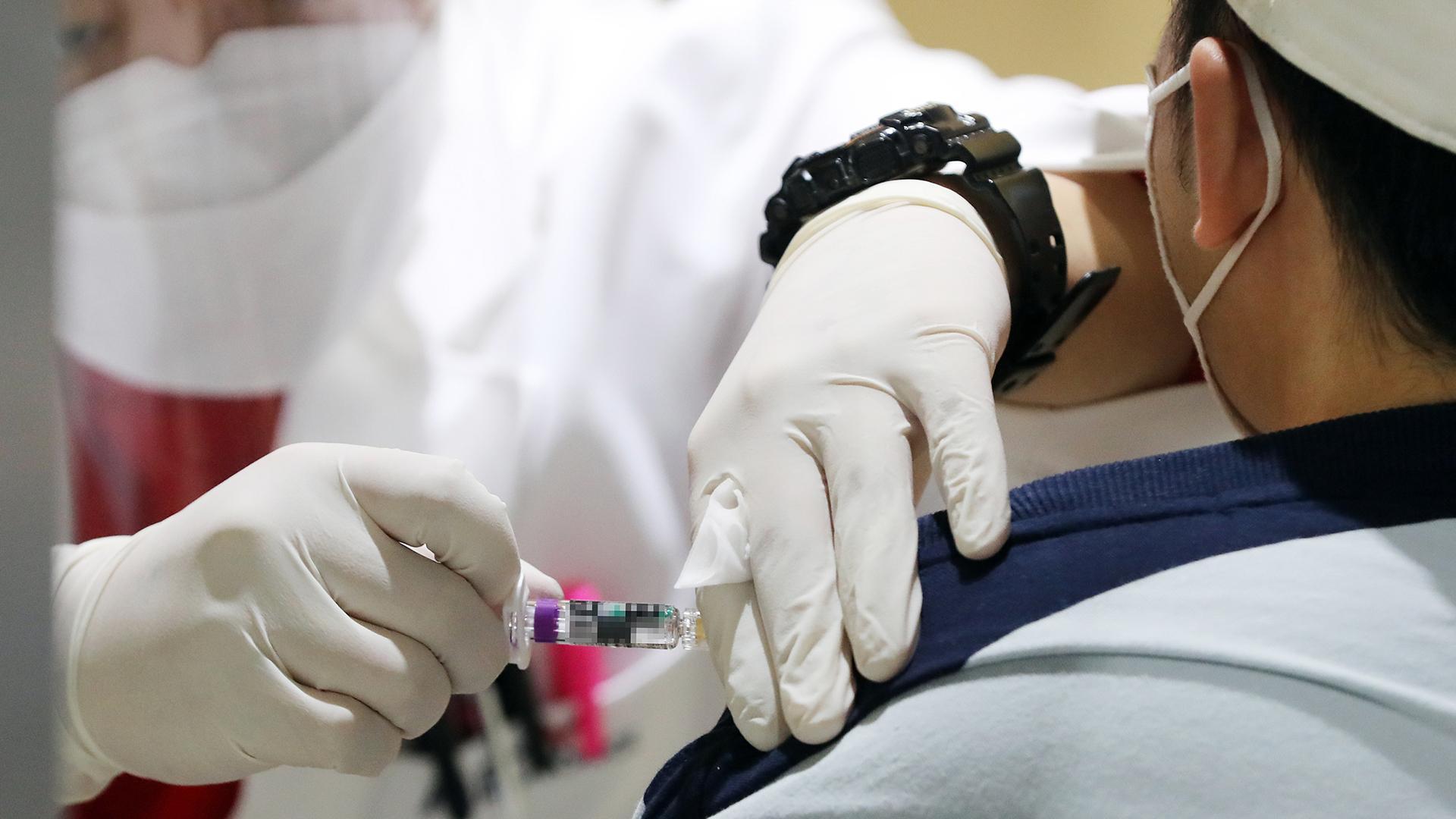
Nasal Spray Vaccines
Live attenuated influenza vaccines (LAIVs) administered as nasal sprays have been developed, offering an alternative to injectable vaccines. These can be particularly useful for children and those who prefer needle-free options.
Global Influenza Surveillance and Vaccine Strain Selection
A critical aspect of modern influenza vaccination is the global surveillance network coordinated by the World Health Organization (WHO). This system monitors circulating flu strains and guides the annual selection of vaccine strains.
How does the WHO select flu vaccine strains?
The process involves several steps:
- Year-round collection and analysis of influenza virus samples worldwide
- Twice-yearly meetings to review data and predict which strains will dominate
- Recommendations for vaccine composition for the Northern and Southern Hemispheres
- Vaccine manufacturers produce vaccines based on these recommendations
This collaborative effort ensures that flu vaccines are updated regularly to match circulating strains as closely as possible, maximizing their effectiveness.

Challenges and Future Directions in Influenza Vaccination
Despite significant progress, several challenges remain in the fight against influenza:
Viral Mutation and Antigenic Drift
Influenza viruses mutate rapidly, leading to constant changes in their surface proteins. This “antigenic drift” can reduce vaccine effectiveness and necessitates frequent updates to vaccine formulations.
Pandemic Preparedness
The threat of a new influenza pandemic remains a concern for global health authorities. Efforts are ongoing to improve surveillance, vaccine production capacity, and response strategies to better handle future pandemics.
Improving Vaccine Uptake
Encouraging widespread vaccination remains a challenge in many regions. Public health initiatives focus on education, accessibility, and addressing vaccine hesitancy to increase flu vaccine coverage.
As research continues, the future of influenza vaccination looks promising. Advances in genomics, immunology, and vaccine technology offer hope for more effective, broadly protective, and easily administered flu vaccines. The lessons learned from over a century of influenza vaccine development continue to inform not only our approach to seasonal flu but also our strategies for combating other viral threats.

History of influenza vaccination
History of influenza vaccination
- All topics »
- A
- B
- C
- D
- E
- F
- G
- H
- I
- J
- K
- L
- M
- N
- O
- P
- Q
- R
- S
- T
- U
- V
- W
- X
- Y
- Z
- Resources »
- Fact sheets
- Facts in pictures
- Multimedia
- Publications
- Questions & answers
- Tools and toolkits
- Popular »
- Air pollution
- Coronavirus disease (COVID-19)
- Hepatitis
- Monkeypox
- All countries »
- A
- B
- C
- D
- E
- F
- G
- H
- I
- J
- K
- L
- M
- N
- O
- P
- Q
- R
- S
- T
- U
- V
- W
- X
- Y
- Z
- Regions »
- Africa
- Americas
- South-East Asia
- Europe
- Eastern Mediterranean
- Western Pacific
- WHO in countries »
- Statistics
- Cooperation strategies
- Ukraine emergency
- All news »
- News releases
- Statements
- Campaigns
- Commentaries
- Events
- Feature stories
- Speeches
- Spotlights
- Newsletters
- Photo library
- Media distribution list
- Headlines »
- Focus on »
- Afghanistan crisis
- COVID-19 pandemic
- Northern Ethiopia crisis
- Syria crisis
- Ukraine emergency
- Monkeypox outbreak
- Greater Horn of Africa crisis
- Latest »
- Disease Outbreak News
- Travel advice
- Situation reports
- Weekly Epidemiological Record
- WHO in emergencies »
- Surveillance
- Research
- Funding
- Partners
- Operations
- Independent Oversight and Advisory Committee
- WHO’s Health Emergency Appeal 2023
- Data at WHO »
- Global Health Estimates
- Health SDGs
- Mortality Database
- Data collections
- Dashboards »
- COVID-19 Dashboard
- Triple Billion Dashboard
- Health Inequality Monitor
- Highlights »
- Global Health Observatory
- SCORE
- Insights and visualizations
- Data collection tools
- Reports »
- World Health Statistics 2022
- COVID excess deaths
- DDI IN FOCUS: 2022
- About WHO »
- People
- Teams
- Structure
- Partnerships and collaboration
- Collaborating centres
- Networks, committees and advisory groups
- Transformation
- Our Work »
- General Programme of Work
- WHO Academy
- Activities
- Initiatives
- Funding »
- Investment case
- WHO Foundation
- Accountability »
- Audit
- Programme Budget
- Financial statements
- Programme Budget Portal
- Results Report
- Governance »
- World Health Assembly
- Executive Board
- Election of Director-General
- Governing Bodies website
- Member States Portal
- Home/
- Newsroom/
- Spotlight/
- History of Vaccination/
- History of influenza vaccination
- Flu Vaccine Information
- The 1930s: Scientists isolated the influenza A virus from animals to study the virus and learn how it can be weakened/killed to create a vaccine.

- Early 1940s: Jonas Salk, MD (yes, the same doctor who worked on the polio vaccine!) and others work to develop the first inactivated flu vaccine with support from the U.S. Army. The Army was particularly interested in supporting this research because many soldiers died from flu during the 1918 flu pandemic during World War 1.
- 1942: A vaccine that includes both influenza A and influenza B viruses is produced after the discovery of influenza B viruses.
- 1945: The first flu A vaccine is licensed for use in the United States.
- FFF hereby grants to you, and you accept, a limited, non-exclusive, non-transferable, non-assignable, royalty-free license to use the FFF Logo, which you may download and use solely in online and print earned media publications for a period of no more than six (6) months in the United States.
- You acknowledge that the FFF Logo is a valid trademark; that FFF is the sole owner of the FFF Logo; and that FFF retains all right, title, and interest in and to the FFF Logo. You agree that any and all use that you make of the FFF Logo, and any and all goodwill arising from your use of the FFF Logo, shall inure exclusively to the benefit of FFF. You also agree that you shall not challenge the validity of the FFF Logo or FFF’s ownership or title thereto during the term of the License Agreement or thereafter.
- You agree that you shall use the FFF Logo only in the form shown above, and that you shall not alter, modify, change, or edit the FFF Logo in any manner.
- You acknowledge the valuable goodwill and reputation in the FFF Logo, and that it is essential that the high standards and reputation associated with the FFF Logo be maintained.
 You therefore agree to use the FFF Logo consistent with the highest standards of quality so as to protect and maintain the FFF Logo and FFF’s rights therein.
You therefore agree to use the FFF Logo consistent with the highest standards of quality so as to protect and maintain the FFF Logo and FFF’s rights therein. - FFF shall have the right to review and inspect your use of the FFF Logo at any time. FFF, in its sole discretion, may determine that you are not using the FFF Logo in an acceptable manner and require that you discontinue your use of the FFF Logo. To the extent that FFF requires that you discontinue your use of the FFF Logo, you agree that you shall remove the FFF Logo from all online and print earned media publications as soon as practicable under the circumstances, and that you shall not use the FFF at any time in the future.
- You must include the following notice in connection with any use of the FFF Logo: “The Families Fighting Flu, Inc. logo is the registered trademark of Families Fighting Flu, Inc.”
pneumonia (bacterial and hemorrhagic), pleural empyema, lung abscess (may lead to lung failure),
from the cardiovascular system – myocarditis, pericarditis (may lead to heart failure),
from the nervous system – meningitis, meningoencephalitis, encephalitis, neuritis, neuralgia, polyradiculoneuritis,
from the ENT organs – otitis media, sinusitis, rhinitis, tracheitis,
from the muscular system – myositis,
glomerulonephritis, Reye’s syndrome, toxic-allergic shock, etc.

Persons suffering from chronic cardiovascular diseases: especially congenital and acquired heart defects (especially mitral stenosis).
Persons suffering from chronic lung diseases (including bronchial asthma).
Patients with diabetes.
Patients with chronic diseases of the kidneys and blood.
Pregnant women.
Older people over 65 years of age, because in most cases they have chronic diseases in varying degrees.

A year-round disease affecting everyone
What is influenza?
We know now that influenza, or flu, is caused by a virus – but for
many years it was thought to be caused by a bacterial infection. In 1892, German scientist Richard Pfeiffer isolated a small bacterium from the noses of patients with flu, naming it ‘bacillus influenzae’.
In 1892, German scientist Richard Pfeiffer isolated a small bacterium from the noses of patients with flu, naming it ‘bacillus influenzae’.
Early attempts at a vaccine during the 1918 influenza pandemic were based on this understanding, and it was not until the 1930s, when the influenza virus was identified, that progress towards an effective vaccine could really begin.
Influenza – also known as the ‘flu’ – is a highly contagious respiratory illness, which spreads easily through the air or when people touch contaminated surfaces. In many cases the disease is mild, with symptoms such as chills,
fever and fatigue, and it can also be spread through asymptomatic infections in people who do not even know they are sick.
But the flu can also result in serious complications, particularly in vulnerable people like young children, older persons, pregnant women and people with medical conditions such as asthma, diabetes or heart disease. The most common complication is
pneumonia, typically caused by a secondary bacterial infection.
Flu viruses mutate very rapidly, and uncontrolled spread gives rise to many different strains, which fall into 2 main types affecting humans – influenza A and influenza B.
© National Museum of Health and Medicine
Emergency hospital during influenza epidemic, Camp Funston, Kansas (1918).
©
Credits
“The mother of all pandemics”
The h2N1 influenza pandemic that swept across the world from 1918 to 1919, sometimes called “the mother of all pandemics”, involved a particularly virulent new strain of the influenza A virus. The first wave of infections in early 1918
resulted in mild illness, but a second wave later that year was more deadly.
The 1918 pandemic is estimated to have infected 500 million people worldwide, killing between 20 and 50 million. The resulting death rates were so high that life expectancy rates around the world dropped by several years, and more people are thought
to have died as a result of the flu pandemic than over the course of the entire First World War.
Researchers in the United States and Europe raced to find an effective vaccine against influenza during the pandemic years, and their efforts produced hundreds of thousands of doses – but they were targeting the wrong pathogen.
© WHO, Eric Schwab
The day starts at the World Influenza Centre, London, with a conference between Dr C.E. Andrews, Director (right), and his assistant Dr A.A Isaacs
©
Credits
Progress toward a vaccine
In 1933, British researchers Wilson Smith, C.H. Andrewes and P.P. Laidlaw at London’s National Institute for Medical Research (NIMR) made a breakthrough when they isolated and identified the influenza virus. They found no bacteria in throat
washings from patients with influenza and discovered that the disease was caused by a virus.
With support from the US Army, the first inactivated flu vaccine was developed by Thomas Francis and Jonas Salk at the University of Michigan. The vaccine was tested for safety and efficacy on the US military, before being licensed for wider use in
The vaccine was tested for safety and efficacy on the US military, before being licensed for wider use in
1945.
© WHO, Eric Schwab
Miss H.B. Donald of Melbourne, Australia at the Siemeus electron microscope
©
Credits
Multiple strains
Researchers had long suspected that different types of influenza viruses existed, as the blood of some influenza patients did not develop antibodies to the strain isolated in 1933. During the testing period, scientists also discovered the existence
of another strain of the virus: influenza B.
In 1942, a new bivalent vaccine was developed that protected against both the h2N1 strain of influenza A and the newly discovered influenza B virus.
During the 1947 flu season, researchers discovered that existing vaccines were ineffective against the flu viruses circulating at the time. To investigate the viruses in circulation, the World Health Organization (WHO) established the Worldwide Influenza Centre in 1948 and the Global Influenza Surveillance and Response System (GISRS) in 1952.
Scientists could now manufacture vaccines based on the monitoring of virus strains in circulation around the world, updating the strains targeted by the vaccine in response.
Efforts to track the evolution and emergence of flu viruses continue today, and scientists monitor both seasonal and potentially pandemic flu strains. Because new strains appear frequently, the seasonal flu vaccine usually changes each year, as scientists
determine how the virus has mutated and spread.
Each year, WHO recommends virus strains for inclusion in flu vaccines for each hemisphere, and different vaccines are developed, targeting 3 or 4 strains of the virus predicted to be most commonly circulating in the coming flu season.
© CDC
This historic image depicts a line of people each awaiting a New Jersey Influenza vaccination. Also known as the Swine Flu, this image was captured during a 1976 immunization campaign
©
Credits
Potential for pandemics
Influenza pandemics have occurred throughout history: records document at least 3 well before the 1918–19 pandemic, and another 3 have taken hold after, in 1957–58, 1968–69 and 2009–10.
Influenza viruses with pandemic potential regularly emerge, but not all go on to cause a pandemic. WHO works to monitor influenza viruses with pandemic potential and to prepare for future influenza pandemics.
© WHO, Noor Images, Olga Kravets
Lyon, France, 9 March 2022; Institute of infectious agents, University Hospital Lyon. A lab technician at work, seen through the automated PCR system instrument
©
Credits
Continued efforts
Researchers are constantly working to develop new vaccine technologies to keep a step ahead of the viruses.
A live attenuated vaccine delivered in the form of a nasal spray was first licensed in 2003, a vaccine using recombinant DNA technology was approved in 2013, and additional influenza vaccines based on newer technologies are being tested in clinical
trials.
Despite these efforts, seasonal influenza still kills up to 650 000 people a year globally. Influenza is a constantly evolving virus, and immunity to a single strain through infection or vaccination does not necessarily protect against new strains
Influenza is a constantly evolving virus, and immunity to a single strain through infection or vaccination does not necessarily protect against new strains
that develop.
We know from experience there is likely to be another flu pandemic, and we should be as well prepared as possible when it happens. That’s why monitoring the virus and keeping up with vaccination is crucially important.
Watch this video to learn more about the history, symptoms and treatment of Influenza.
Related history of vaccination stories
When was the Flu Vaccine Invented?
Mission: To save lives and reduce hospitalizations by protecting children, families, and communities against influenza.
Insights on Influenza
Posted on February 17, 2022
Share this article:
Flu vaccines have been around for a long time, and their development started almost 100 years ago! Below, we outline the flu vaccine development timeline:
Although some of the technology has changed and flu vaccines now include 2 types of influenza A and 2 types of influenza B, the science is still based on what was discovered almost 100 years ago. Because flu viruses can evolve quickly and new mutations have occurred (like h2N1), the viruses included in flu vaccines are updated every year to match the types of flu most likely to make people sick.
Sources:
https://www.historyofvaccines.org/content/articles/influenza
https://www.cdc.gov/flu/pandemic-resources/pandemic-timeline-1930-and-beyond.htm
You might also be interested in…
Add to Calendar: Keeping Your Kids Up to Date on Essential Vaccines
What You Should Know About the Recommended Childhood Vaccinations Schedule
Flu Vaccine & Cancer: Should You Get Vaccinated?
Find a Flu Vaccine
Vaccine Finder
Stay Informed
Sign up for our Weekly Flu News and quarterly newsletter, Fighting Influenza, to stay up-to-date on the latest flu news.
LOGO LICENSE AGREEMENT
You are required to accept all of the terms and conditions in this License Agreement in order to receive a limited, non-exclusive, non-transferable, non-assignable, royalty-free license to use the FAMILIES FIGHTING FLU, INC. logo, displayed below (the “FFF Logo”), from Families Fighting Flu, Inc. (“FFF”). In order to accept these terms and conditions, you must click the “I Accept” button below.
I Accept
Why you should get a flu shot
Influenza is an acute viral disease that can affect the upper and lower respiratory tract, is accompanied by severe intoxication and can lead to serious complications and deaths, mainly in the elderly and children. In temperate areas, seasonal epidemics occur mainly during the winter season, while in tropical areas, influenza viruses circulate all year round, leading to less regular epidemics.
In temperate areas, seasonal epidemics occur mainly during the winter season, while in tropical areas, influenza viruses circulate all year round, leading to less regular epidemics.
Influenza is ubiquitous globally, with annual infection rates estimated at 5%-10% in adults and 20%-30% in children.
The flu has been known to mankind for centuries. The first documented influenza epidemic occurred in 1580. True, at that time nothing was known about the nature of this disease. The pandemic of respiratory infection in 1918-1920, which took over the globe, and was called the “Spanish flu”, most likely was nothing more than an epidemic of severe influenza. It is known that the Spaniard was distinguished by incredible mortality – with lightning speed it led to pneumonia and pulmonary edema, even in young patients.
Reliably the viral nature of influenza was established in England only in 1933 by Smith, Andrews and Laidlaw. In 1940, Francis and Magil discovered the influenza B virus, and in 1947, Taylor isolated another new variant of the influenza virus, C.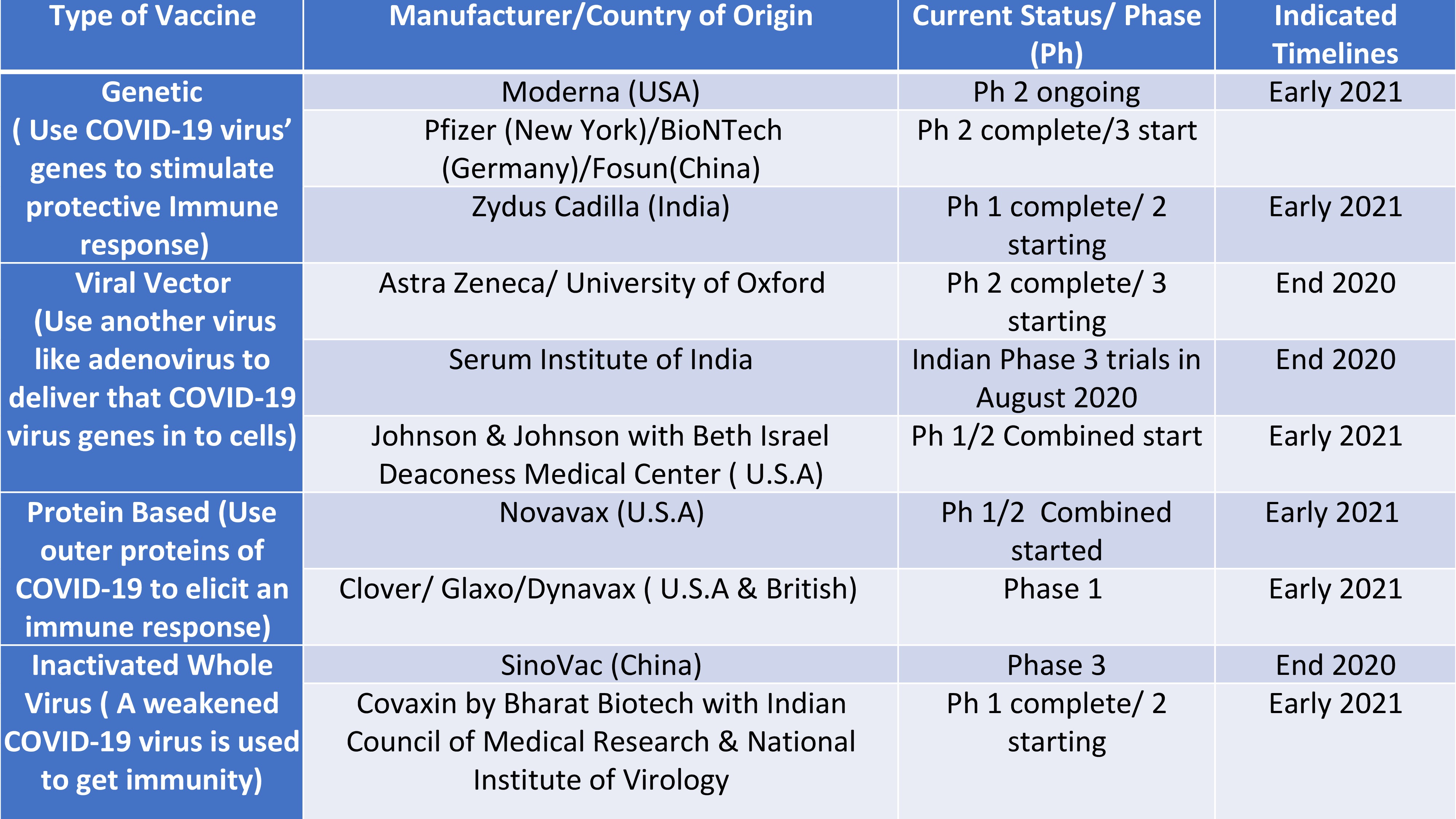 Since 1940, it became possible to actively study the influenza virus and its properties – the virus began to be grown in chicken embryos. Since then, a big step forward has been made in the study of influenza – the ability to mutate has been discovered, and all parts of the virus capable of variability have been identified. An important discovery, of course, was the creation of a vaccine against influenza.
Since 1940, it became possible to actively study the influenza virus and its properties – the virus began to be grown in chicken embryos. Since then, a big step forward has been made in the study of influenza – the ability to mutate has been discovered, and all parts of the virus capable of variability have been identified. An important discovery, of course, was the creation of a vaccine against influenza.
Influenza can cause severe complications in high risk groups such as:
The most effective way to prevent the disease or its severe consequences is vaccination .
Vaccination is especially important for people from high-risk groups development of serious complications of influenza, as well as for people living with or caring for people from high-risk groups.
The Federal Service for Supervision of Consumer Rights Protection and Human Welfare (Rospotrebnadzor) recommends annual vaccination for the following population groups:


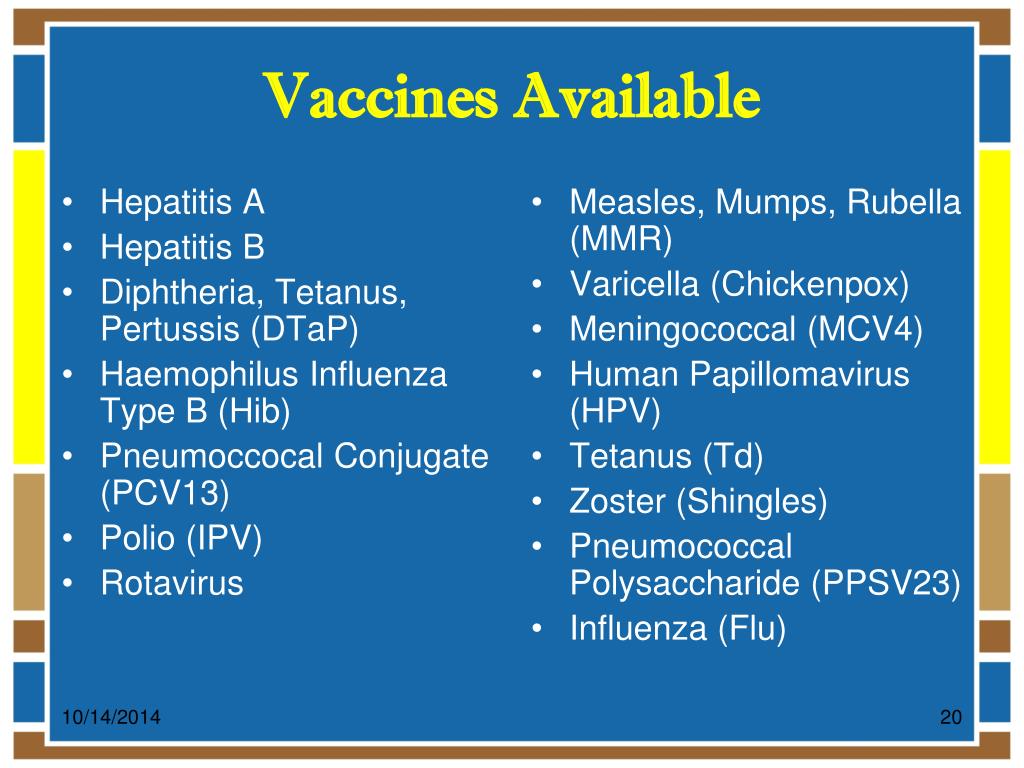 You therefore agree to use the FFF Logo consistent with the highest standards of quality so as to protect and maintain the FFF Logo and FFF’s rights therein.
You therefore agree to use the FFF Logo consistent with the highest standards of quality so as to protect and maintain the FFF Logo and FFF’s rights therein.
